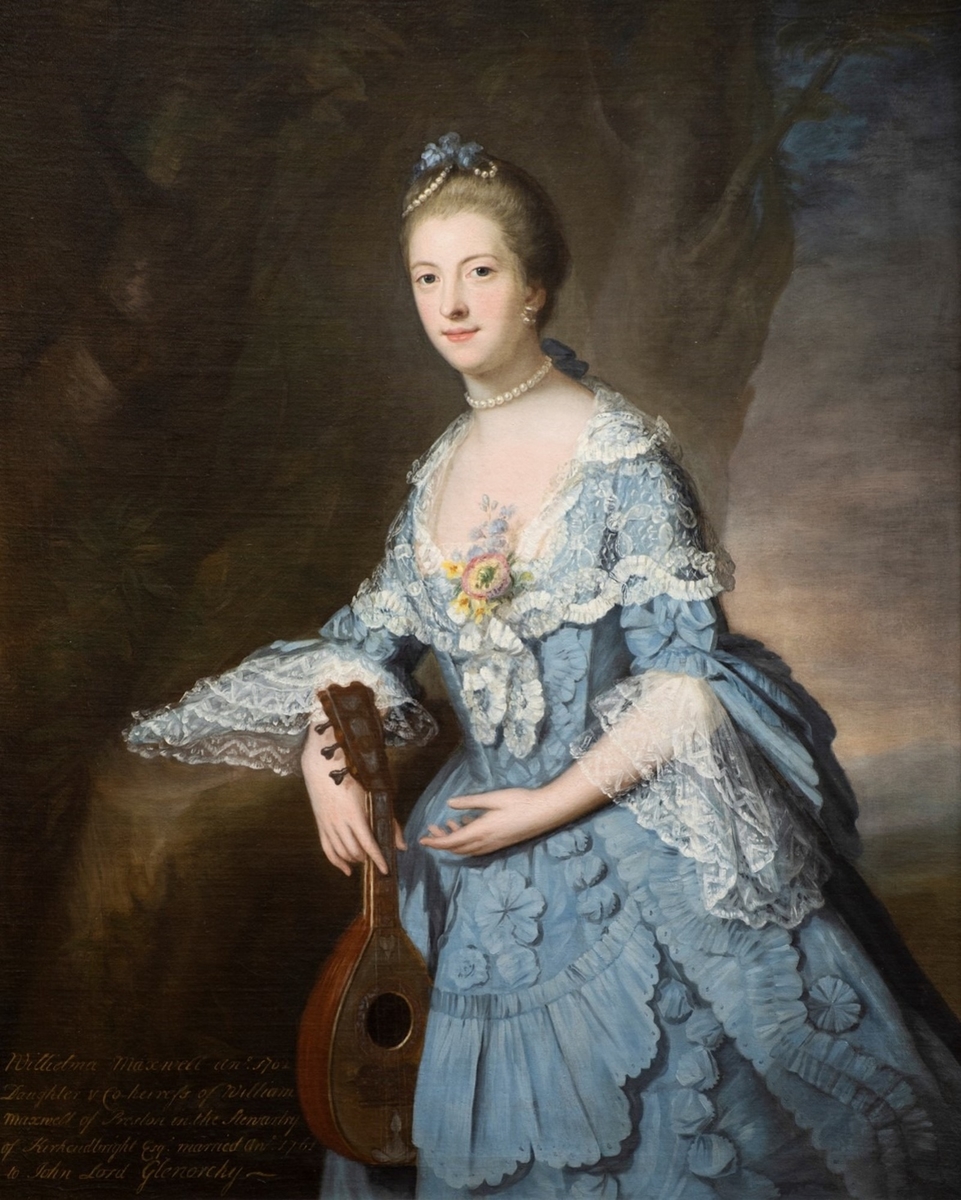Catherine Read, Self Portrait, (Wikipedia commons)
Catherine Read (1723-78) was a successful British portraitist in pastels and oils in the second half of the eighteenth century. She was one of thirteen children born in Dundee to a wealthy family of Catholic, Jacobite supporters. After the failed 1745 rebellion, in which her uncle was executed for his involvement, the family, like many other Jacobite-sympathisers, left Scotland for Paris. There Read trained with the rococo portraitist Maurice Quentin de la Tour, as well as with Louis Blanchet and fellow Scot, Robert Strange.
Catherine Read, British Gentlemen in Rome c.1750, Yale Center for British Art
In 1750 she moved to Rome. It too was a well-established Jacobite destination, but for Read it was also a cultural pilgrimage, her own version of the Grand Tour, taken by fashionable young men such as those she portrayed in 1750. Read gained support and commissions from the Stuart court-in-exile, from Italian aristocrats and from those British tourists. She copied a van Dyck painting of Charles I's children, in what must have been a deliberate attempt to stake her claim as a potential successor to the Stuart king's heirs. And a letter suggests that she was considered highly talented: 'Was it
not for the restrictions her sex obliges her to be under, I dare safely
say she would shine wonderfully in history painting', wrote Peter Grant, one of her patrons in Rome.
Read also secured the patronage of several prominent members of the Catholic church including Cardinal Albani, and through him she discovered the work of Rosalba Carriera. She visited Venice specifically to meet Carriera, a sign that she was already focussing on pastels, and that she was interested in meeting a fellow woman artist. By this stage Carriera was elderly and virtually blind, but she gave advice to the younger woman and it seems likely that Read painted her portrait. Read's letters however, reveal that she struggled both financially and socially. It was considered improper for unmarried women to go out alone and much religious art was out of reach to her because of her sex: 'she complains about the 'superstitious bigots' who forbade her from seeing works. Equally, her Italian clients seemed reluctant to pay a woman for their portraits, preferring to give gifts which Read was then obliged to sell.
Read moved to London in 1753, quickly becoming a sought after pastel and oil portraitist. Although in Rome she seems to have mainly painted portraits of men, she now became known as a portrayer of women and children, although whether by choice or because of social convention it is difficult to say. She sent an unsolicited portrait to Queen Charlotte, which impressed the queen so much that she commissioned others from Read, including a picture with an infant Prince of Wales in 1761. The Queen had a reputation for promoting women artists, employing about sixteen during her reign, and through her Read gained several other court commissions. Read also travelled to Paris and painted members of the French royal family, perhaps on the basis on her previous Jacobite connections.
Engraving after Catherine Read, King George IV and Frederick, Duke of York and Albany, c.1765-70, National Portrait Gallery
Her work was widely engraved - a sign of popularity. She exhibited at the Free Society and was one of only two women in the inaugural 1760 exhibition of the Society of Artists, of which she was also an honorary member. Her reputation led Tobias Smollett to praise her pastels above those of Carriera. Perhaps most tellingly, Read was paid more for her portrait of Lady Glenorchy than Gainsborough received for a paired portrait of her husband. Although most of her works were of society figures, Read also painted 'women of letters' including Catharine Macaulay and Frances Brooke.
In 1775, with her popularity in London on the wane, she travelled to India with her niece to visit one of her brothers, who was living in Madras, and gain access to the lucrative portrait market of the East India Company and the India rulers. It was while sailing back from there in 1778 that she died at sea.
Catherine Read, Frances Moore Brooke, 1771 (Wikipedia commons)
Catherine Read carved a successful career as a portraitist in the eighteenth century, first in Italy, then London, and finally in India. She came from a well-to-do family and would have had some personal income to fall back on, but nevertheless she must have made a living as a painter. She never married, there is no evidence that she struggled financially and she was able to leave money to her nieces. She also demonstrates the level of agency which women could achieve. She actively supported other female artists, she lived independently and travelled to India with only a younger female companion.
However, there were also restrictions which she could not overcome. Her portraiture was predominantly of women and children as it was difficult for a female artist to paint a man who was not a family member. Her oeuvre was restricted to portraiture because it was virtually impossible for a woman to be taken seriously as a history painter. And although she exhibited at the Society of Artists she never gained institutional acceptance. It took the exceptional talent of Angelica Kauffman to break these barriers.





_by_Read.jpg/220px-Frances_Moore_Brooke_(1724-1789)_by_Read.jpg)


No comments:
Post a Comment